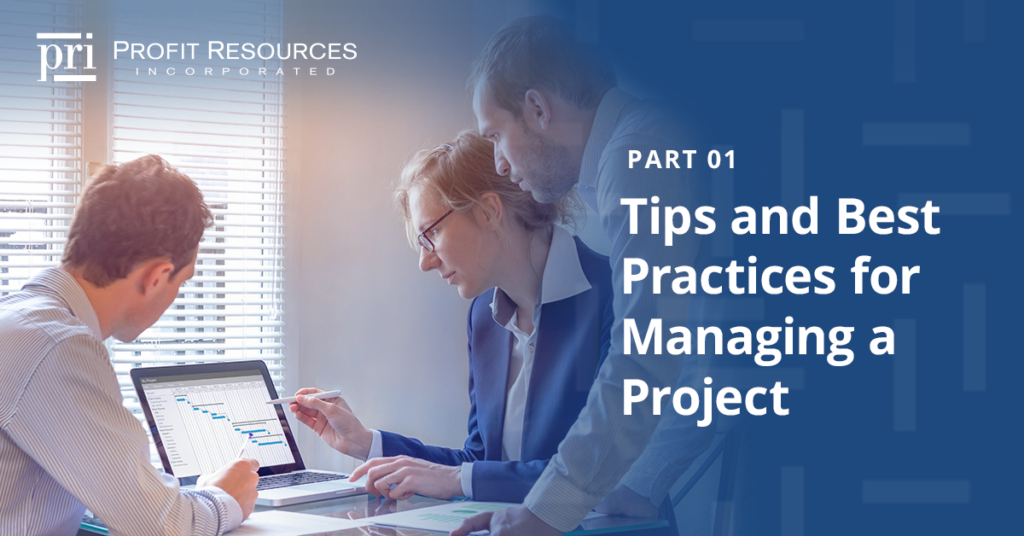
When launching complex projects such as a core conversion or merger and acquisition activities, financial institutions are wise to dedicate substantial time and resources to planning and project management. A good project management process will minimize business disruption and maximize efficiencies and long-term benefits, including profitability.
Sue Schmiedeler, project manager at Profit Resources Inc., recently carved out time to discuss best practices for managing projects in the most efficient and least disruptive way.
Three tools that should be utilized when undertaking a complex project include:
1. Project Plan
This is the overall strategic document that speaks to the approach to planning and execution of the project. It should include important information such as key stakeholder groups, types of communication that will be utilized, details regarding risk management, approaches to building the project timeline, project tools that will be used for the project, assumptions and dependencies, and an overview of project scope, to name a few.
2. Project Timeline
A high-level project timeline is crucial to ensure that all milestones and task dependencies are identified and planned for. This document shows that the project can be completed in the time frame allowed.
3. Action Item Log
An action item log includes the detailed tasks that are assigned to project team members. The detailed tasks support the high-level timeline items.
As the FI launches the project using these three tools, one of the most vital elements to consider will be communication. Communication is key, and it is important to have a good communication plan. Use the WH question method by asking Who, What, When, Where, Why and How.
- Who needs the communication (aka the audience), who will create the communication and who will send the communication?
- What needs to be communicated?
- When do they need the communication and how frequently?
- Where will this communication be stored for historical reference?
- Why is this project being undertaken?
- How will information be communicated? Email? Letter? Status meetings?
With these elements in place, the FI is ready to take the next steps in project management. In the next blog, Sue will outline 10 tips that are particularly beneficial in the project management process. Profit Resources specializes in identifying profitability improvement areas for financial institutions through revenue growth, cost control, streamlining processes, and effective use of technology. Contact us to learn more about our personalized approach to propel growth and improve profitability.
Other Recent Articles
- Community Banking Month: How Peoples Bank is Strengthening Their Community
- AI and Automation in Community Banking
- Keeping The Community Bank Feel as You Grow
- The Human Touch in Digital Banking: Balancing Automation and Personalization
- Future-Proofing Financial Institutions: Navigating Trends, Technology, and Strategic Innovation
- The Power of Curiosity in Process Improvement Strategy
